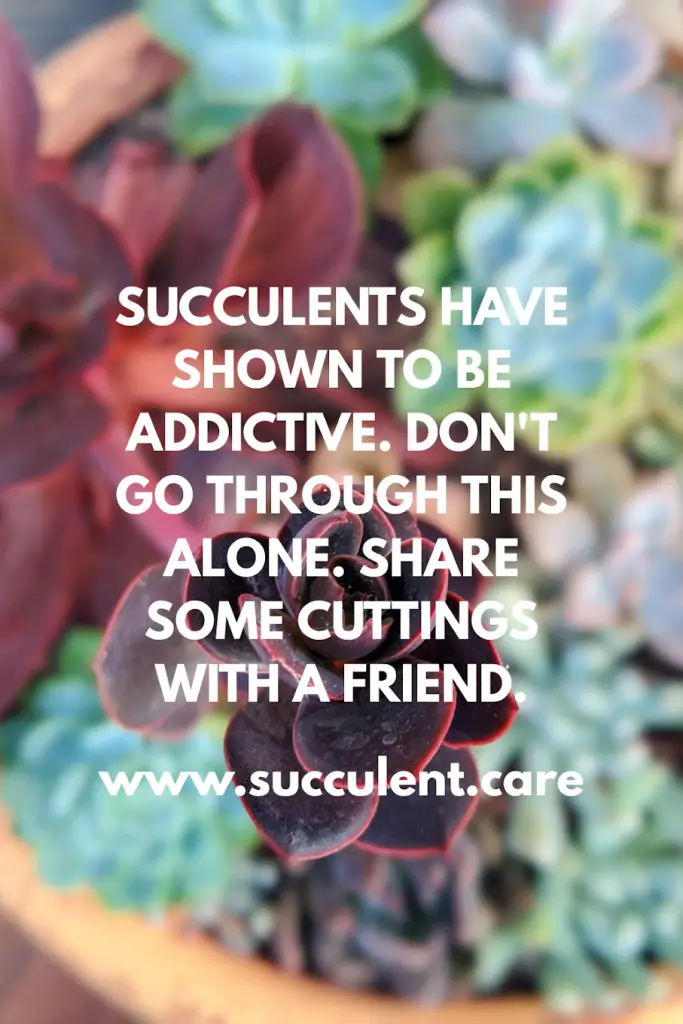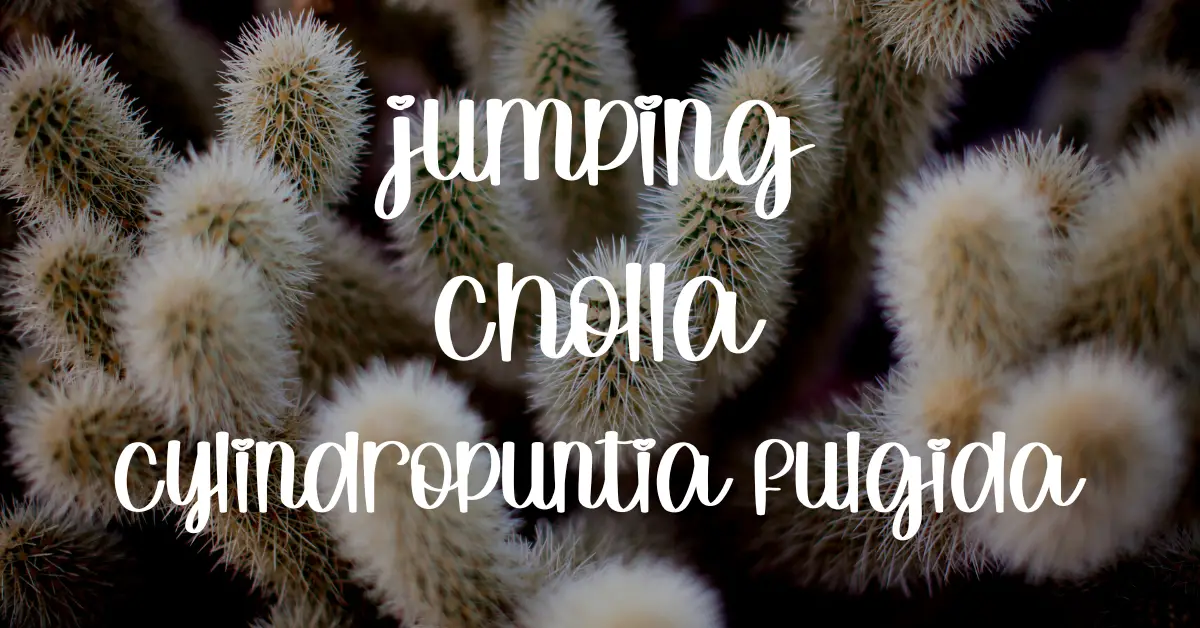The arid landscapes of the southwestern United States and northern Mexico are home to many unique plants that are well-adapted to the harsh, dry conditions. Among these desert dwellers is the eye-catching jumping cholla, botanically known as Cylindropuntia fulgida ‘Jumping Cholla’. This cactus is aptly named for the ease with which its spiny branches detach from the main plant – the barbed spines and stickiness of the joints mean that contact with an animal brushing past or a human passing too close can lead to hitchhiking stems becoming firmly attached, then detaching to spread and root in a new spot.
Cylindropuntia fulgida ‘Jumping Cholla’ has a distinctive appearance, with its cylindrical green stems growing in dense clusters from a shrub-like base. The stems are segmented, and are covered in barbed spines that range from yellow to red in color. In spring, the jumping cholla produces showy pink or lavender flowers at the stem tips. After flowering, red or yellow-tinged fruits develop that provide a source of food for desert wildlife.

Why is it called jumping cholla?
Jumping cholla is named for its habit of “jumping” onto the clothing or fur of passing animals or humans. The plant has spines that easily detach from the stem and become embedded in skin or fur, leading to the belief that the plant “jumps” onto passing animals. The plant’s scientific name, Cylindropuntia fulgida, comes from the Greek word “puntos,” which means “pointed,” and the Latin word “fulgidus,” which means “shining.” This refers to the plant’s spiny stems, which are shiny and pointed.
Be sure to check out: Succulent Soil DIY

Habitat and Distribution
Jumping cholla is native to the desert and arid grassland environments of the southwestern United States and northern Mexico. It is most commonly found in Arizona, Nevada, and California in the United States, and in the states of Sonora and Baja California in Mexico. The plant prefers gritty, well-draining soil and full sun exposure, and is adapted to survive long periods of drought. This cactus plays an important ecological role, with its spines providing shelter and protection for small animals and birds that build nests among the stems. Its flowers are an important food source for pollinators including bees, butterflies, and hummingbirds. The fruits are eaten by local mammals and birds that help disperse the seeds to new locations.
You might also like: Aerial Roots on Succulents

Physical Characteristics
The jumping cholla is a shrubby cactus with segmented stems that grow in clusters. Each stem is covered in spines, which serve to protect the plant from herbivores and provide insulation against heat and cold. The spines are typically yellow or brown in color, and may be up to 2 inches long. The plant also has small, colorful flowers that bloom in shades of pink, purple, or red. These flowers are typically about 1 inch in diameter and are followed by small, edible fruit. In its native habitat, jumping cholla can reach heights of up to 10 feet. However, in cultivation it is typically much smaller, reaching only a few feet in height.
You have to see: 10 Interesting Adaptations of Cactus and Succulents

Reproduction and Propagation
Cylindropuntia fulgida employs both sexual reproduction through seed dispersal as well as asexual vegetative reproduction via stem cuttings to spread and establish new individuals.
Sexual reproduction occurs when the jumping cholla produces vivid pink or lavender flowers on the tips of its segmented stems. After pollination, the flowers develop into reddish or yellow-tinged fruits that contain small, black seeds. These seeds are dispersed via wind, animal ingestion, or attachment to passing animals to take root in new locations. The seeds are relatively short-lived, so dispersal and germination must occur within a year or two for new plants to become established.
Vegetative reproduction through stem cuttings is another strategy used by the jumping cholla. The barbed and easily detached stems allow segments that become stuck to an animal or person to detach, fall, and take root in a suitable spot. To propagate Cylindropuntia fulgida intentionally through cuttings, a healthy stem section containing leaves is cut from the main plant and allowed to dry out for several days. The cut end dries and calluses over, which helps prevent infection when planted. The cutting is then placed in well-draining cactus potting soil and kept in a warm, sunny location. While propagation by cuttings can be successful, it may take some time for the cuttings to produce new roots and grow. Success can depend on providing the specific soil, moisture, and light conditions that the jumping cholla needs.
The small, hard-coated seeds and easily detached, rootable stems are well-suited to dispersal into new territories and colonization of suitable desert habitats. At the same time, the specific requirements of this cactus can make intentional propagation in cultivation somewhat challenging for the gardener or amateur botanist.
You might like: Fire Sticks Plant Care

Cultural and Ecological Significance
Jumping cholla has a long history of cultural and medicinal use by indigenous peoples in its native range. The plant’s fruit is edible and has been used as a food source by Native American tribes. The plant’s spines have also been used in traditional medicine as a treatment for various ailments. In addition to its cultural significance, jumping cholla is also ecologically important as a food source for wildlife and as a component of desert ecosystems.
You might also like: Senecio crassissimus ‘Lavender Steps’
What are some challenges that come with propagating jumping cholla in cultivation?
Some challenges of propagating Cylindropuntia fulgida (jumping cholla) in cultivation include:
Providing the specific growing conditions it requires, including lots of bright light, warm temperatures, and very well-draining soil. The jumping cholla is adapted to harsh desert conditions, so it can be difficult to replicate its native environment.
Rooting the cuttings can take time and patience. The cut ends must dry out and callus over before planting, and it can take weeks or months for new roots to form. Not all cuttings may be successful in rooting.
The dense clusters of barbed spines can make working with and handling jumping cholla challenging, even with thick gloves. The spines detach easily and can stick into the skin, so care must be taken when taking and planting cuttings.
Seed propagation can be difficult due to the hard seed coat and specific germination requirements. The seeds have a short viable lifespan and may not germinate without a cold/warm cycle treatment to break dormancy.
With research into the particular needs of jumping cholla and careful handling/propagation work, cultivation can be achieved but it does present unique challenges compared to many other succulent plants. Following the advice of experts and other experienced growers can help in learning how best to propagate this striking but spiny cactus.
How often should I water jumping cholla once it’s established?
Once established, Cylindropuntia fulgida (jumping cholla) should be watered sparingly. As a desert cactus, it is adapted to dry conditions and can rot if soil stays moist for too long. A good rule of thumb is to only water when the soil is dry several inches deep. Check the soil before watering and only water thoroughly when the top few inches are dry. Then allow all excess water to drain from the pot.
The frequency of watering will depend on factors like light, temperature, and pot size. In hot, sunny weather the soil may dry out more quickly and need water every 1-2 weeks. In cooler weather with less light, you may only need to water every 3-4 weeks. Water less in the winter when growth slows. The key is never to leave jumping cholla sitting in wet soil, so water sparingly and allow drying out between waterings.

Should I adjust my watering schedule if I move my cactus to a sunnier spot?
Yes, it is a good idea to adjust your watering schedule if you move your jumping cholla to a sunnier spot. More sunlight will lead to faster drying of the soil, so you may need to water more frequently. Check the soil more often to see how quickly it is drying out. You may need to water every 7-10 days in very sunny, hot weather versus every 2-3 weeks in less intense light.
However, it is still important not to overwater even with the increased light and heat. Only water when the top few inches of soil are dry. Then water thoroughly until it flows out the drainage holes. Never leave your jumping cholla sitting in water, as this can lead to root rot. With some monitoring of your cactus in the new spot, you can adjust the watering to meet its needs.
Conclusion
Cylindropuntia fulgida, or the jumping cholla, is a unique and important plant that plays a role in the desert ecosystems of the southwestern United States and northern Mexico. With its spiny, segmented stems and small, colorful flowers, it is a distinctive and visually striking plant. It reproduces both sexually and vegetatively, and has a long history of cultural and medicinal use by indigenous peoples. If you’re interested in learning more about this fascinating plant, consider researching its reproductive biology or the cultural significance of the jumping cholla to indigenous cultures.
You might also like: 14 Sweet Pink Succulents and Where to Buy Them

Where to Buy Succulents Online



